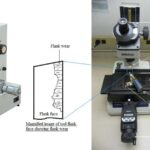How were drugs traditionally extracted from plants and microorganisms?
How were drugs traditionally extracted from plants and microorganisms?
Please login to submit an answer.
Traditional Methods of Extracting Drugs from Plants and Microorganisms
Historically, the extraction of medicinal compounds from plants and microorganisms has relied on various traditional techniques. These methods focus on isolating active ingredients while maintaining their efficacy. Below are some of the most common traditional extraction methods:
1. Maceration
Maceration involves soaking the plant material in a solvent at room temperature for an extended period. The process allows soluble compounds to diffuse into the solvent. Key points include:
- Procedure: The crude drug is cut into smaller pieces and immersed in a solvent (water or alcohol) with occasional agitation to enhance extraction.
- Applications: This method is suitable for extracting heat-sensitive compounds that may degrade with heat.
2. Percolation
Percolation is a more efficient method than maceration, involving the continuous downward flow of solvent through a bed of plant material.
- Procedure: The plant material is packed in a percolator, and the solvent is allowed to flow through it gradually, extracting active constituents.
- Advantages: This method can yield a more concentrated extract compared to maceration and is often used for tinctures and fluid extracts.
3. Decoction
Decoction is used primarily for extracting water-soluble constituents from tougher plant materials.
- Procedure: The plant material is boiled in water for a specified time, then cooled and filtered.
- Applications: Commonly used in traditional medicine systems like Ayurveda to prepare herbal teas or “quath.”
4. Infusion
Infusion is similar to decoction but typically involves shorter steeping times and lower temperatures.
- Procedure: The plant material is steeped in boiling water for a brief period, allowing soluble components to dissolve.
- Types: Fresh infusions (made with hot water) and concentrated infusions (using more plant material).
5. Soxhlet Extraction
The Soxhlet extraction method allows for continuous extraction using a specialized apparatus.
- Procedure: The ground plant material is placed in a thimble within the Soxhlet apparatus, where it is repeatedly washed with solvent that evaporates, condenses, and drips back onto the material.
- Advantages: This method efficiently extracts large amounts of active ingredients with minimal solvent usage.
6. Reflux Extraction
Reflux extraction involves boiling the solvent with the plant material under controlled conditions.
- Procedure: The mixture is heated, and vapors are condensed back into the solution to ensure prolonged contact between the solvent and the plant material.
- Applications: Useful for extracting thermolabile compounds due to its controlled heating.
7. Cold Pressing
This technique is often used for extracting oils from seeds or fruits.
- Procedure: Plant materials are mechanically pressed without heat, preserving volatile compounds.
- Applications: Commonly used for essential oils and fats.
8. Fermentation
In some traditional practices, fermentation is employed to extract bioactive compounds.
- Procedure: Plant materials are soaked in water and allowed to ferment, which can enhance the solubility of certain compounds.
- Applications: Used in Ayurvedic preparations like asava and arista.
- Share on Facebook
- Share on Twitter
- Share on LinkedIn
Helpful: 0%




